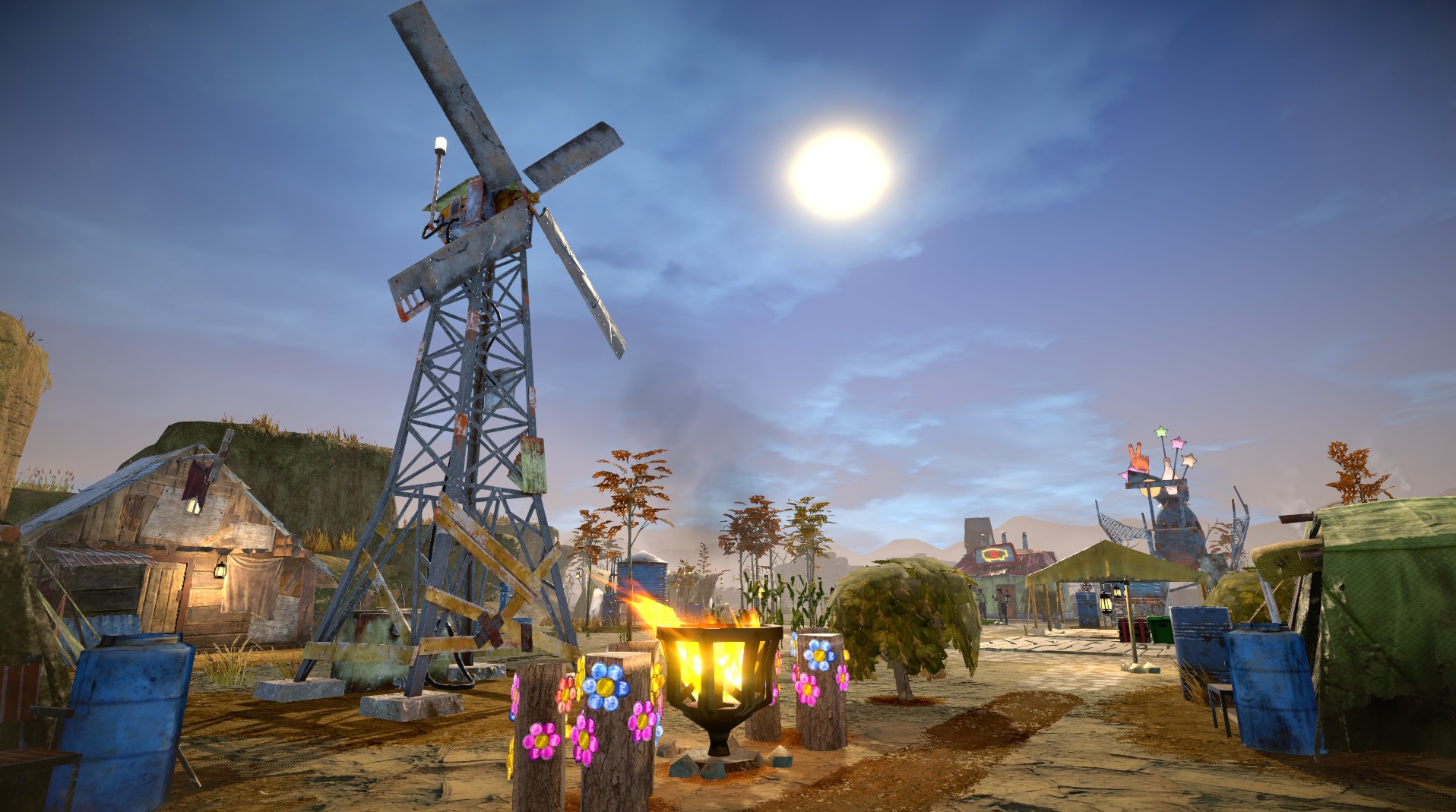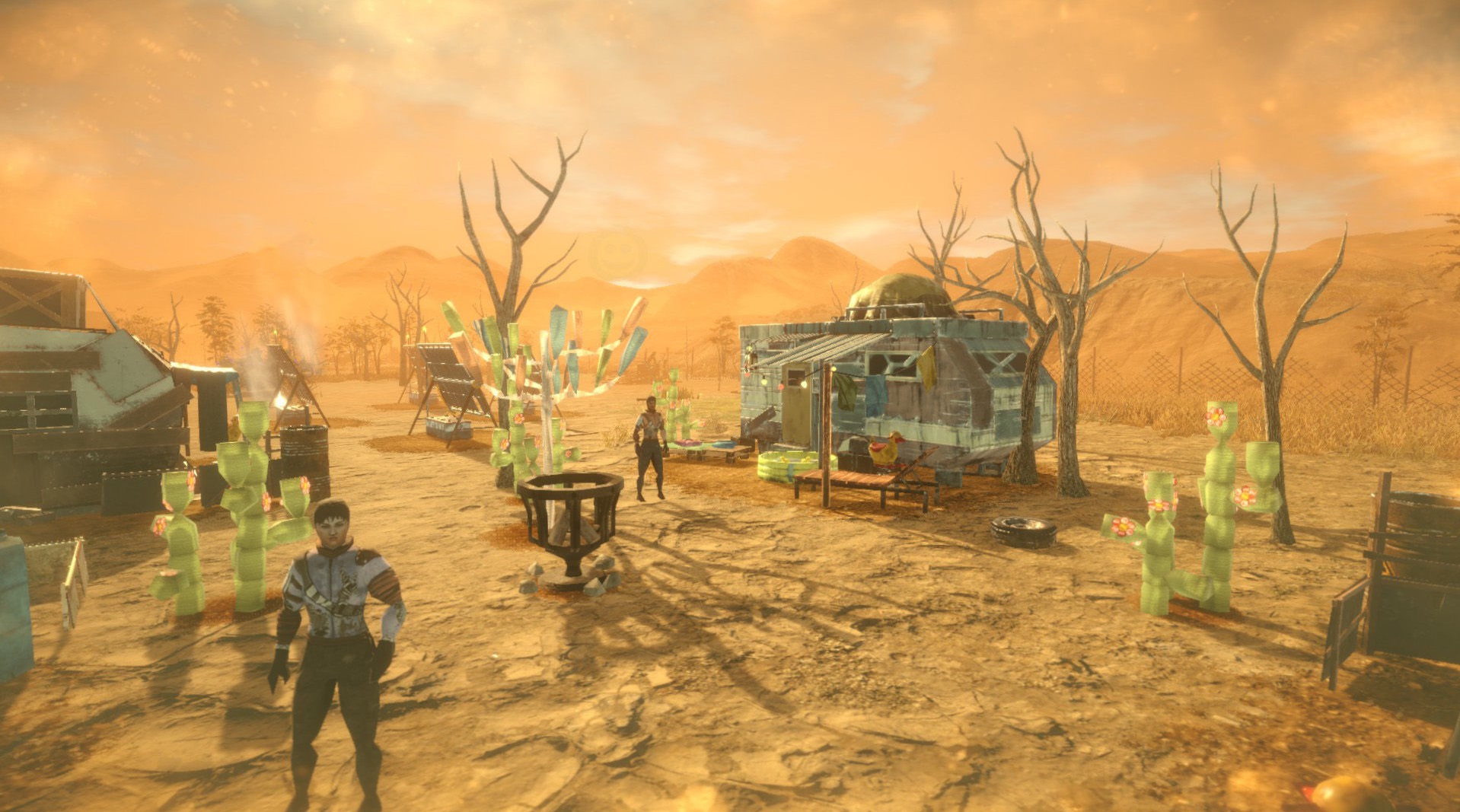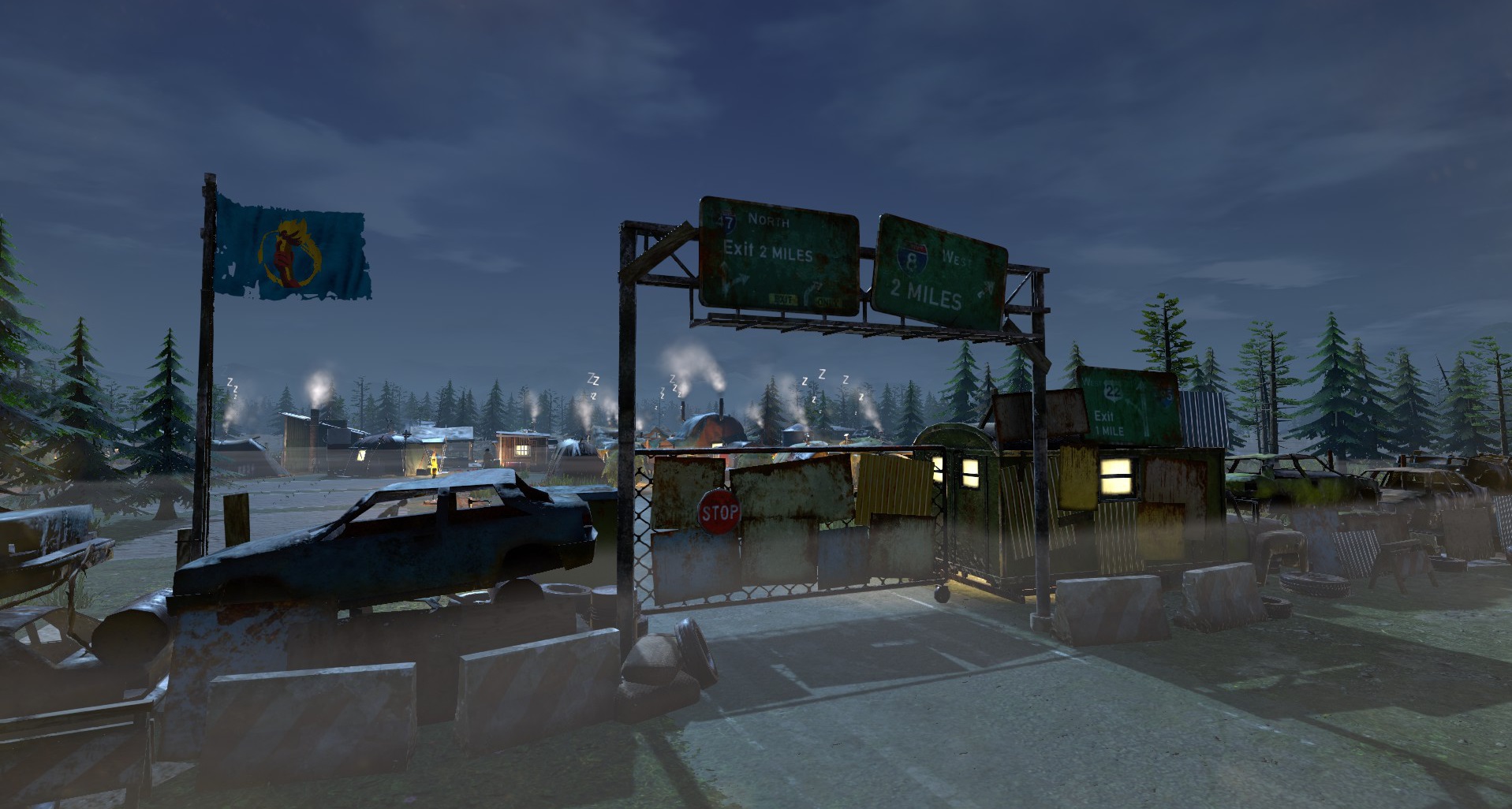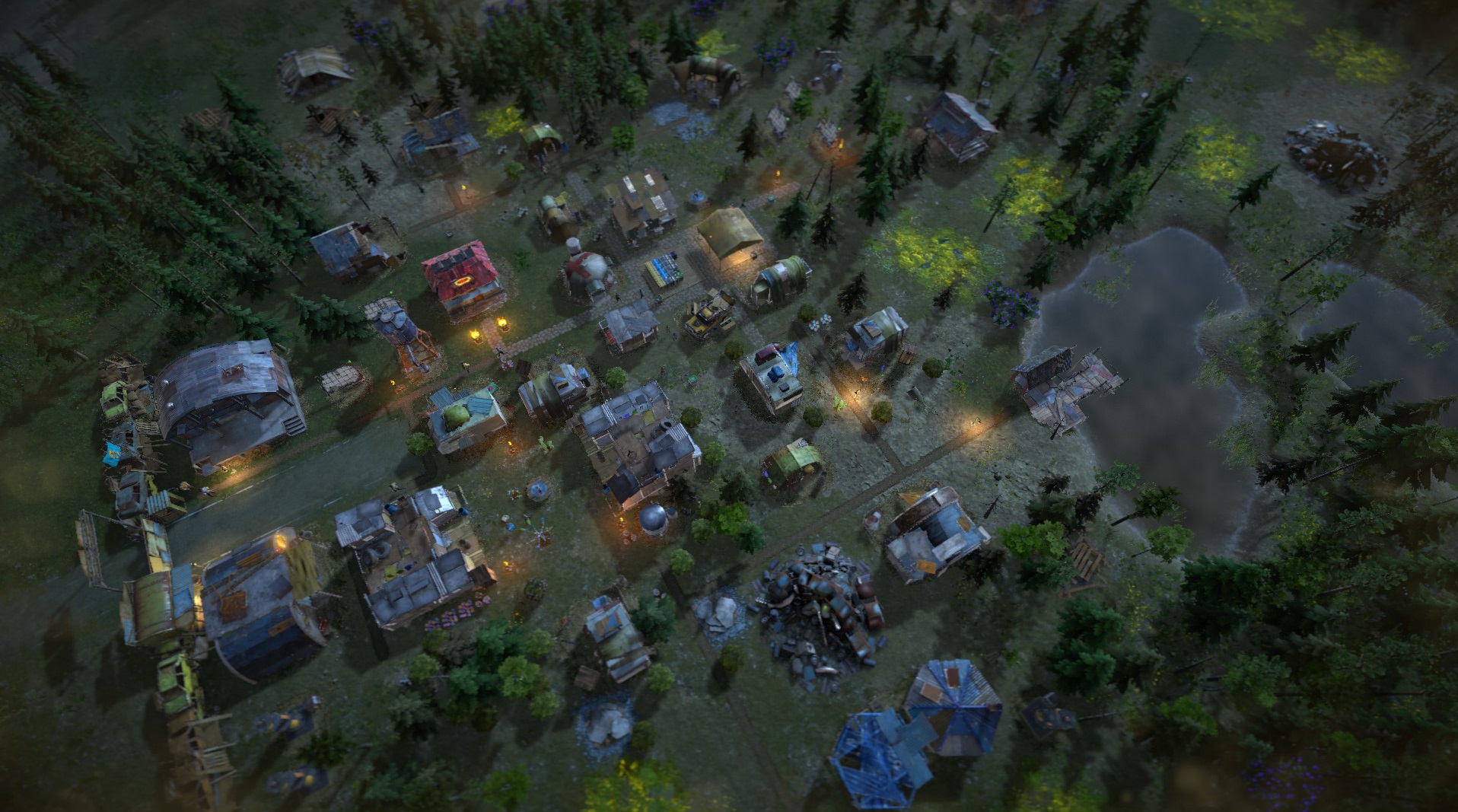Surviving the Aftermath is a management game at the end of human civilisation
Hands-on with the Surviving Mars follow-up.

My first post-apocalyptic survivor has died. I think his name was Angus, but maybe that's just the Scot in me projecting. He was a good dude, probably, who liked collecting wood and plastic and moaning about having a broken bone. He died because I didn't have time to fix said broken bone and then a meteor crushed his home. Surviving the Aftermath is a slightly mean follow-up to Surviving Mars, set on a version of Earth that's seen better days, and I have bigger problems to deal with than Angus's now rotting corpse.
Surviving the Aftermath follows the general philosophy of its predecessor, in that you've got to build a colony for humans in an inhospitable environment. Sometimes they will die. This time, however, we're back on Earth and with a new developer, Iceflake Studios, at the helm. Shit has hit the fan and a small contingent of unlucky (or lucky?) survivors must band together to deal with radiation, meteors, bandits and brawls next to the lovely new well that I just built. How dare you!
The survival management genre is still relatively new, yet Surviving the Aftermath—simply Aftermath from here on out because it's the apocalypse and who has time for formal names?—has a surprisingly conservative start. While its predecessor, developed by former Tropico devs Haemimont Games, embraced sci-fi and speculative fiction with domes and drones and all sorts of future tech, Aftermath evokes more familiar city builders and management games, though not without some enticing twists.
Starting a new game, I'm presented with some interesting difficulty options. Like its predecessor, you don't simply pick a difficulty level—you establish the challenge through more meaningful choices. In this case, it's how brutal the apocalypse was, how many resources you have left and how many people survived. Did most of humanity die out, leaving behind a lush wilderness? Or did mankind's last moments involve incinerating the planet and turning it into a wasteland? The setting is the difficulty.
I went for a mixture, giving me a middle-of-the-road apocalypse where I had a small number of pretty chill survivors living in a radioactive forest. The primary issues a new post-apocalyptic colony has should be familiar to anyone that's played anything from Cities Skylines to Banished. People want shelter, jobs and fuel. Shelter, at first, comes in the form of crappy tents and emergency shelters. Jobs include scavenging, scouting, and providing food, often via specific buildings. And finally, fuel means water, chow and, when you're a bit more established, electricity.
Straight away, however, there are some much appreciated conveniences that make surviving the end of everything just a wee bit less fiddly. Humanity has left a mess, you see, leaving wood and plastic and metal all over the place, depending on your choices during the initial setup, which then need to be scavenged by survivors. I had a collapsed bunker that provided me with some starting materials, but that bounty quickly vanished, necessitating new buildings and the jobs that accompanied them.
Each resource gathering building has an area of effect around it, where the workers will diligently collect what's available, but all of these buildings, from the recycling facility to the storage yard, can have their scavenging area changed, meaning you don't need to dismantle and reconstruct a building just because the specific node you've been harvesting has vanished.
The biggest gaming news, reviews and hardware deals
Keep up to date with the most important stories and the best deals, as picked by the PC Gamer team.

It's a small concession that has a big impact, emphasising that this is an agile management romp where you need to constantly adapt and find new resources, but without making you go through the same routines over and over again, rebuilding the same old stuff, just because you need some more wood. And I always needed more wood. And more everything! Humanity might be on the brink of extinction, but progress continues unabated.
A few days into the apocalypse and everything was looking pretty good. I had a nice stockpile, everyone had tents and shelters, nobody was starving and we were all really optimistic about the chances of removing all the radioactive waste surrounding the village. Then the others arrived. With Angus, or whatever his name was.
One of the first milestones in Aftermath is building your gate. It's just a wall of cars and junk, but it alerts other survivors that you are open for business—the business of taking in strays. Some might be good. One of the strays was a scout, able to go out into the greater world in search of even more resources, random adventures and science points that can be spent on valuable upgrades. And one of them was some old injured dude who just sucked, frankly.

I had no medicine, or a medical tent, or the resources to build one. I had other concerns. I thought Angus could handle a bit of discomfort for a few days while I worked on making New Caledonia (the name was random, but it was a good fit) the place to be. Unfortunately—for him—his injuries were worse than I realised. And then his house got flattened by a meteor.
Aftermath features several disasters with a range of solutions and countermeasures, though you'll still have to deal with a bunch of fallout. I had two days to prepare for the meteors, but there's not much you can do to stop huge falling rocks. The storage yard was hit, then the in-progress medical tent and finally, to add insult to injury, Angus's home was utterly demolished. He died the next day, heartbroken. I did not have a graveyard and his corpse really bummed us all out.
People got rowdy after that. Aftermath features random story events and personal conflict, ranging from people asking to go and fight bears to people simply fighting each other. Being a permissive leader, I left them to it, so before long I had a whole colony full of injured idiots. The scale of Aftermath seems quite a bit smaller than Surviving Mars, so a small number of upset colonists or bad eggs feels more significant. I needed to get them healthy and happy again before the next awful disaster.

While I was juggling emergencies, I also had broader concerns eating me up. I needed to make sure colonists were getting to work quickly enough, I needed to constantly keep an eye on consumption of myriad resources and for some reason I got it in my head that aesthetics were super important and started a programme of building kitschy lanterns on every street corner. And I still needed that bloody graveyard.
Unfortunately the demo didn't give me quite enough time to repair all the damage I'd inflicted with my half-hearted conflict management skills. That would require more expeditions out into the ruined world in search of even more resources and opportunities. I needed to find out how to make hazmat suits and deal with all the toxic goo that was smeared all over the ground, and I wasn't going to be able to establish a self-sustaining colony without looking outwards.
Conveniently, I won't have to wait much longer to try and rescue what remains of humanity. Paradox and Iceflake have released Surviving the Aftermath in early access on the Epic Games Store today, letting everyone have a go at saving their own Angus. Iceflake is planning on expanding the world map and its colonies with its first early access updates, while the rest is up to player feedback.
You can hit up the official site for the content road map, while Surviving the Aftermath is available now on the Epic Games Store for $20/£16/€20.

Fraser is the UK online editor and has actually met The Internet in person. With over a decade of experience, he's been around the block a few times, serving as a freelancer, news editor and prolific reviewer. Strategy games have been a 30-year-long obsession, from tiny RTSs to sprawling political sims, and he never turns down the chance to rave about Total War or Crusader Kings. He's also been known to set up shop in the latest MMO and likes to wind down with an endlessly deep, systemic RPG. These days, when he's not editing, he can usually be found writing features that are 1,000 words too long or talking about his dog.

